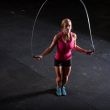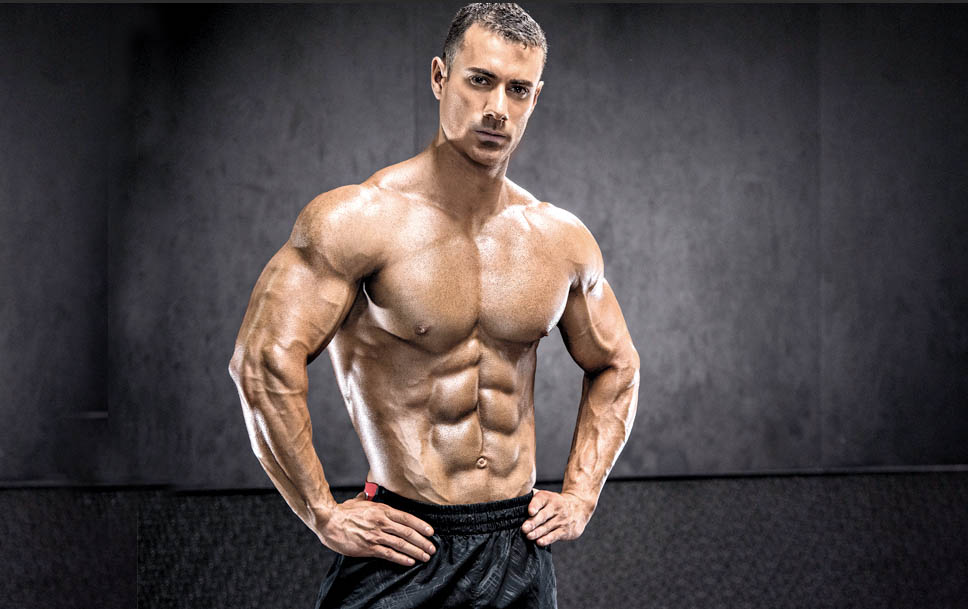It can appear that weight training, whether in the gym or at home, is designed approximately the same way and meets the same needs of each athlete. It seems to reach the same fitness goals. But it is not so simple, as training with weights can accomplish different results.
Doing strength training can be a logical step for increasing muscle strength, increasing muscle mass, or staying in shape. It is good if the trainee is aware of his or her goal and adjusts the training load in accordance with it. But it also happens that, while performing the maximum number of repetitions with low weight, the athlete is convinced that he or she is training “for mass” or vice versa and as a result can overwhelm the muscles without resting and proper nutrition, as they do not expect an increase in muscle growth. After training, an athlete can feel tired, dissatisfied with the result and possibly over-trained. Therefore, having an outline for a particular sports goal already and the next step is to make a training plan corresponding to this goal, nutrition, and a rest time that promotes recovery.
Increasing muscle mass is the most popular and versatile goal for athletes of both genders. Since exercises aimed at muscle growth, train both muscle strength and endurance of an athlete and even help to reduce the percentage of body fat (with proper nutrition). Despite the popularity of the idea of acquiring bigger and developed muscles, the correct answer to the question of how to do this more effectively has not yet been formulated. But the research continues and some principles of training for muscle growth are already known.
If you give your muscles enough work regularly, it will lead to an increase in their strength and volume (with an appropriate recovery). The adaptation of the body to the stress created during training triggers the desired recovery and the muscle development processes. Intense strength training triggers two types of stress:
- Mechanical stress – micro-injury to muscles during resistance exercise. It is accompanied by sensations of burning and overexertion in the muscles.
- Metabolic stress – the process of restoring muscle fibres during rest from a training load. Chemical reactions occurring in the body, during the processing of decay, products and the formation of new tissues.
It is not known for certain which of these stresses can be considered “responsible” for muscle growth, since they affect the body simultaneously. But the obvious fact is that training should provoke muscle stress, and that is not all.
As already detailed in the article about muscle growth, there are two types of muscle fibres in human skeletal muscles that can be conditionally distinguished: “slow” and “fast”.
- Fibres of the first type or slow – are used mainly for aerobic exercise, generate less effort for a longer time and are included in the work from the very first minute of training. They have a small volume and the potential for growth.
- Fibres of the second type or fast – are used mainly under strong anaerobic loads, generate more effort and can make that “extra push”. They are gradually included in the work as the “slow” fibres get tired, but at the same time, they have a greater volume and potential for growth.
When gaining muscle mass, you should focus on the fibres of the second type and the training should be designed in such a way, as to first “turn off” the fibres of the first type and then create sufficient stress by straining the fibres of the second type. Because they will help you make a significant increase in volume.
THREE TYPES OF TRAINING
In 2006, scientists Zatsiorsky and Kremer, identified three main types of training, which are; the three principles of mechanical action on muscle fibres. Each of them is effective in their own way for increasing strength performance or gaining mass.
THE BEST EFFORT METHOD
Training with the maximum possible weights (weight load). During this approach, you need to perform a small number of repetitions of the exercise using the heaviest weight possible.
This kind of workout stimulates muscle micro-damage and is good for increasing muscle strength.
DYNAMIC EFFORT METHOD
Training using light weights at a high speed. The point is to do a lot of reps in one set and keep a fast pace.
The method is good for increasing endurance, movement accuracy, and coordination, but does not create enough stress for muscle growth.
REPEATED EFFORT METHOD
Doing exercises “to failure.” Exercising with a significant, but not maximum weight, until it is not at all possible to do at least one more repetition well. Those very last repetitions, accompanied by a burning sensation and a feeling of overload, engage the muscle fibres of the second type, forcing them to generate the maximum possible effort.
This training method can be considered the most effective for muscle growth of all known today. However, the stress created by the method of repeated efforts will be sufficient to provoke muscle growth only when all the approaches “to failure” are performed. This is the only way to be sure that all muscle fibres are included in the work and received sufficient load.
OTHER IMPORTANT DETAILS
The principle of mechanical action on muscles is the main, but not the only component of training. Even choosing the right exercise strategy can lead to mistakes in planning a workout and reduce its effectiveness. In order not to move away from your goal, performing a sufficient number of repetitions with heavy weights, you need to pay attention to other important factors for successful training, which are:
- The number of approaches and reps: you should neither overdo it nor relax. 3 or 4 approaches (sets) are considered the optimal amount for working out each muscle group, so as not to over-train, but also have time to load all muscle fibres several times. It is even easier to determine the number of repetitions, as you need to create such conditions for performing the exercise so that you can perform no more than 8-12 repetitions “to failure” with a large, but not the maximum possible weight. This way, you can choose the right weight of the exercise machine.
- Rest between sets: it is important not only to create, but also to “maintain” a state of muscle stress during the workout. While performing exercises “for weight” it is enough to restore breathing and wait from 30 seconds to 2 minutes between approaches. The greater the weight, the longer the rest time. You need to prevent muscle fibres from relaxing, but you should not take on the next set too quickly, as the muscles may not be ready to generate the maximum effort possible.
- The speed of the exercise: the performance of one repetition can be divided into 2 components: the moment of generating the maximum effort (lifting the weight, squatting) and the moment of returning to the starting position. So it is precisely the second moment of “exit” from the effort (lowering the weight, lifting the body) that is the most important for muscle growth. Often this part of the exercise is accompanied by discomfort and burning sensation in the muscles. Therefore, the optimal time ratio will be: 1-2 seconds for maximum effort and 3-6 seconds for returning to the starting position.
- The order of the exercise: is important for the rational distribution of efforts. Therefore, it is more logical to start training with exercises with “free” weights (barbells, dumbbells), which give a serious and a more complex load on the muscles and as the exercises are performed, proceed to local exercises that give “targeted” load on specific muscle groups. For example: from squats with a barbell or deadlift, to exercises on an exercise machine.
- Total Load: Like the number of sets and reps, the total amount of exercise in a workout should be sufficient to create mechanical and metabolic stress, but not so excessive that extreme fatigue does not affect the effectiveness of the session. Therefore, 4-6 exercises in each workout will be the optimal number and even more so if they are performed “to failure”.
When designing a training plan, you should take into account that all these tips are recommendations and are not prerequisites for achieving your goal. Using the repetitive effort method and the appropriate recommendations, you can build up a training plan that is optimal for muscle gain. But if you are pursuing other goals, these recommendations are unlikely to contribute to the desired progress and perhaps are even moving away from it.
Conclusion
The secret of the transformation of a thin weak muscle into a functional defined part of the body has not yet been fully disclosed, but this transformation itself is quite real. To achieve your goal, you need as always, to combine a balanced nutritional diet with a complete recovery after an intense physical activity. The method of repeated efforts as a strategy for training activities in this case, is suitable for achieving this goal. Training “to failure” will get you closer to a strong and healthy body with developed muscles, unless you neglect the recovery.




